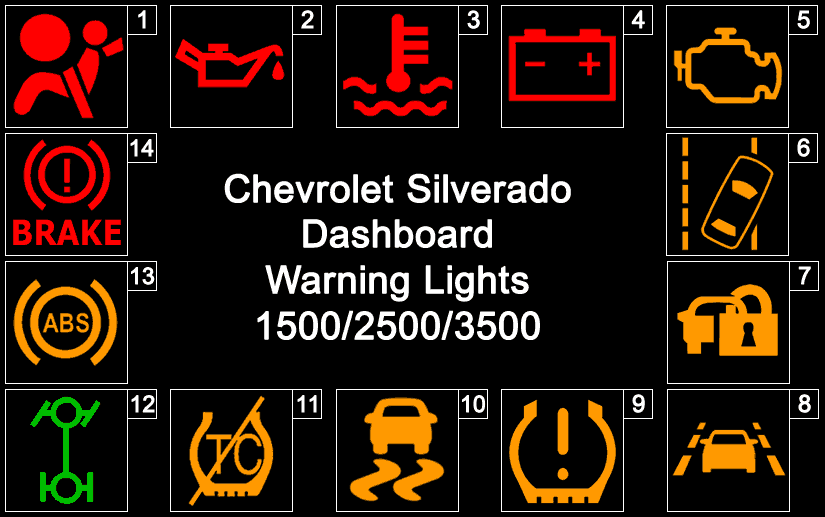

It looks like a circle with a flat bottom and an exclamation point inside. The tire pressure warning light is self-explanatory and universally known, probably more for being a pain in the colder winter months than being a true emergency. Some vehicles also have an oil life indicator or oil change reminder. If this dashboard warning light comes on, you should diagnose and address the issue as soon as you can. Insufficient or incorrect oil pressure within your engine can be one of the worst-case scenarios for your vehicle’s health since your engine relies on oil to function well. It indicates an issue with the oiling system, whether that be a failed oil pump, insufficient oil circulation causing engine overheating, low oil levels within the vehicle, low engine oil pressure, the incorrect type of oil added to the vehicle, or even too much oil added.

The oil pressure warning light is usually red and looks like an oil can with a drip. To avoid making a potentially serious problem worse, drive as little as possible before having the issue diagnosed, and do not drive your car with the check engine light flashing. If your check engine light comes on and nothing appears to be wrong, it is best to pull over or get to a close shop with an OBD II reader that can diagnose the exact issue. It is designed as a “catch-all” light to detect any issue within the engine and its related systems, and it can often overlap with other more specific warning lights. Though there can be slight variations in how the check engine light appears, it is usually a yellow or orange light and usually looks like the outline of an engine, sometimes with the actual words “check engine” within it.įor as useful and recognizable as the check engine light is, it is also one of the most frustrating since it can indicate anything from a loose gas cap to a more serious issue like engine knocking. The check engine light is one of the most ominous warning lights on the dashboard and one that is the most universally recognized.
Lights on your dash meaning manual#
You should always refer to your owner’s manual if you are unsure of what a dashboard warning light means. If one or more lights stay on, there may be a problem.

Several of these warning lights will illuminate under normal conditions so you know they are working, but it is also normal for them to all go out after a few seconds. The best glimpse of the dashboard warning lights is when the engine starts. Most of the important lights like the check engine light, the tire pressure warning light, and the airbag light are almost universally used and recognized, but there may even be slight variations in some of these from vehicle to vehicle. To make it worse, not every dashboard warning light is universal. Modern cars and trucks today often have tons of warning lights to indicate anything from a friendly service reminder to a much more serious problem.


 0 kommentar(er)
0 kommentar(er)
